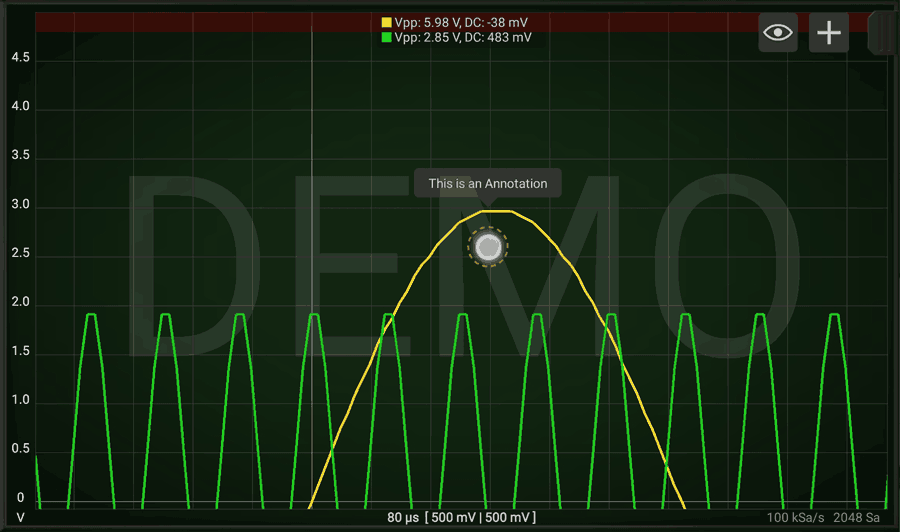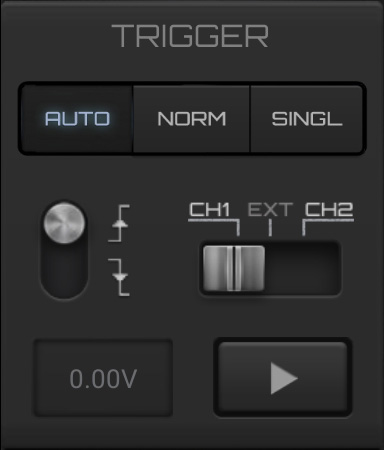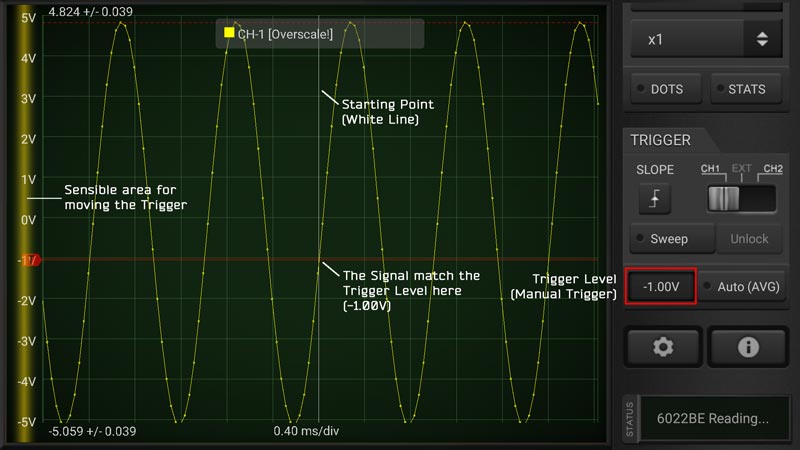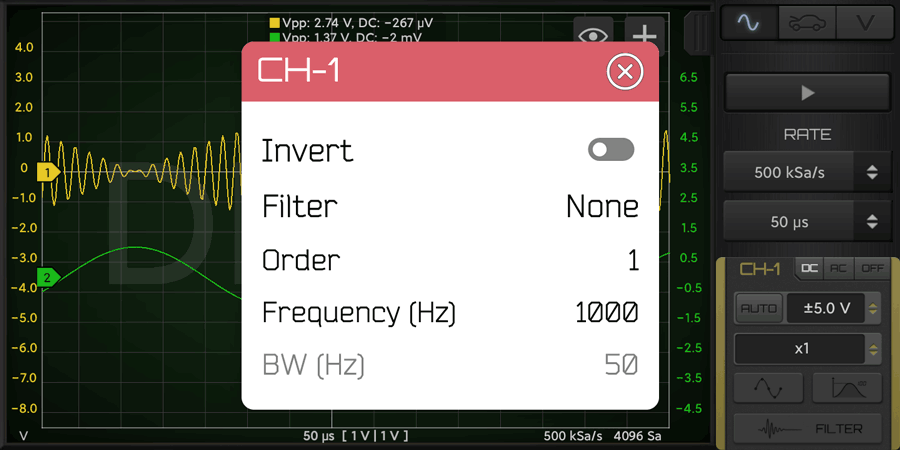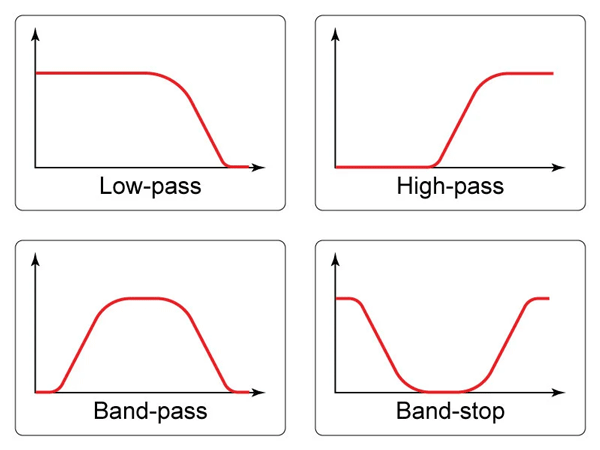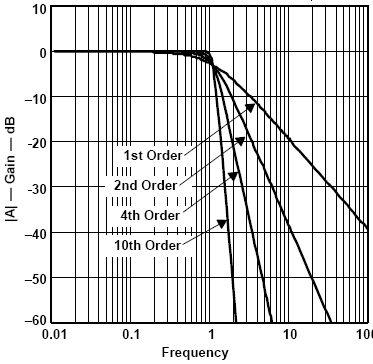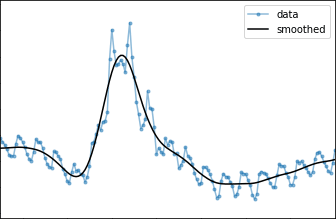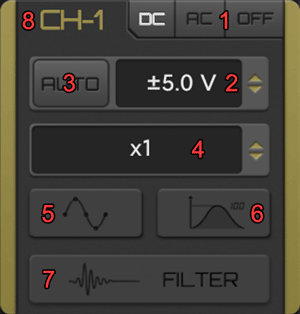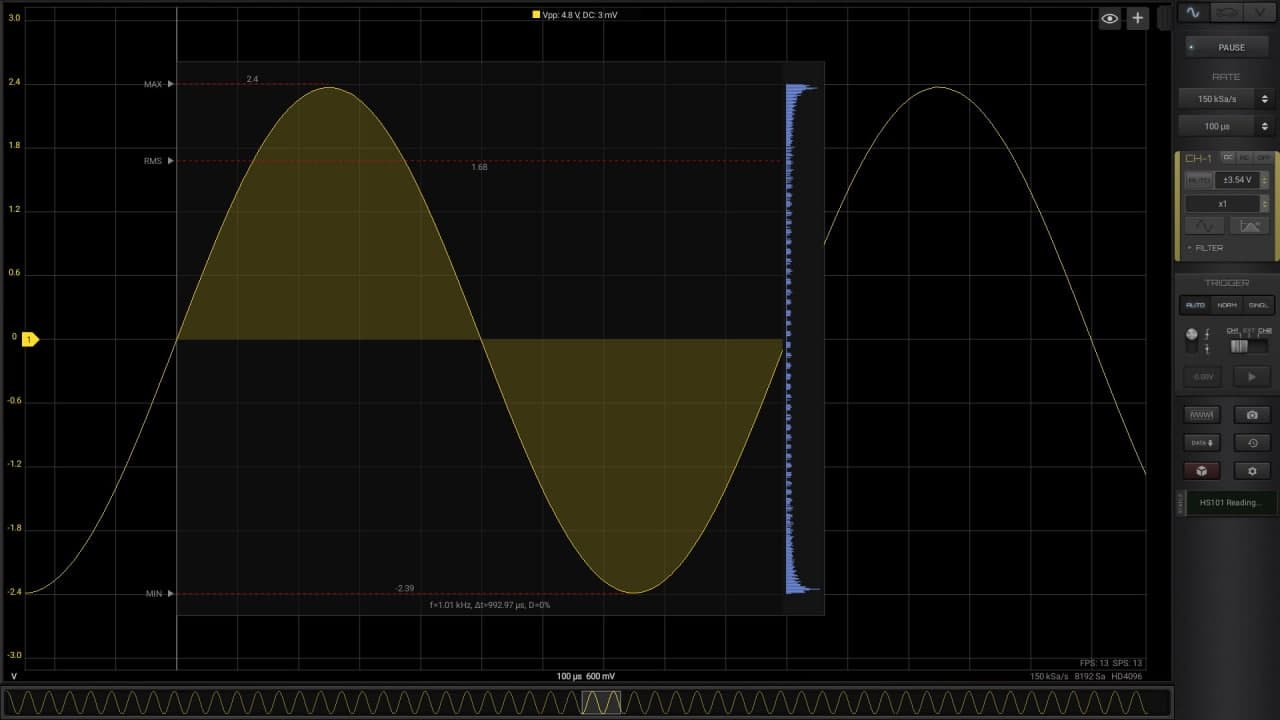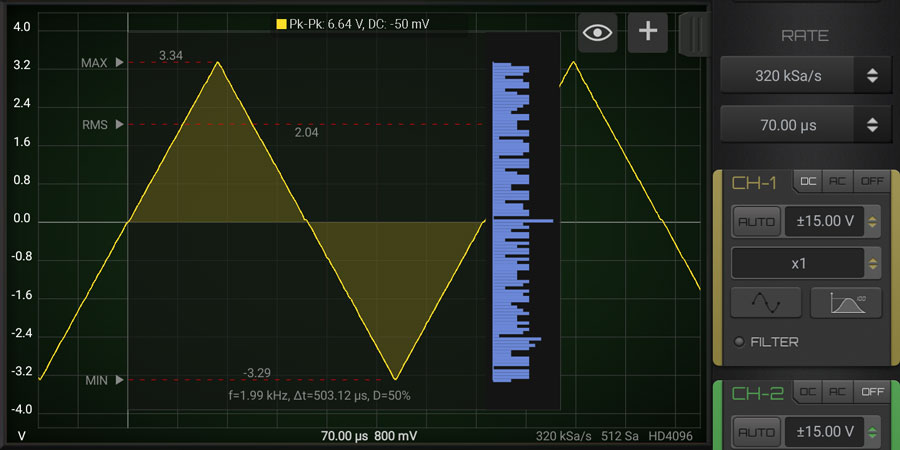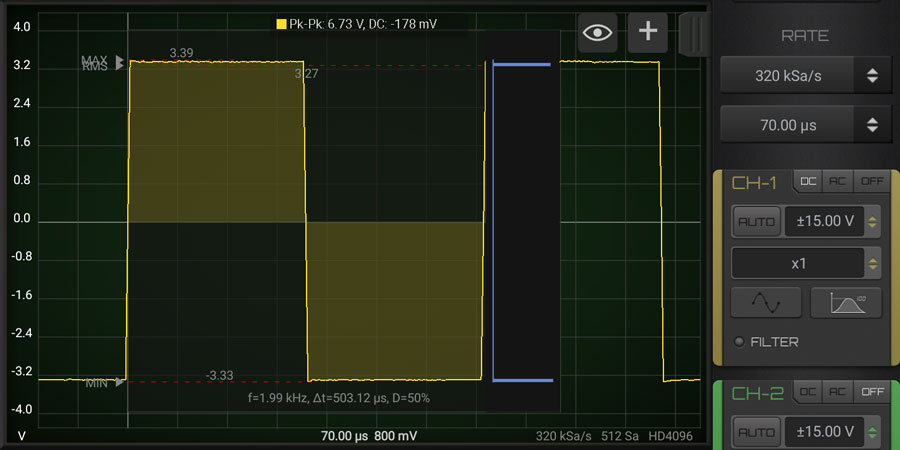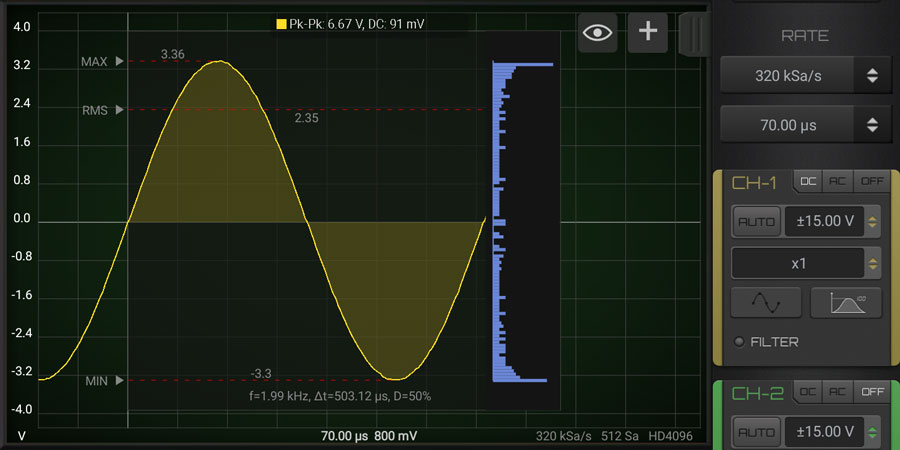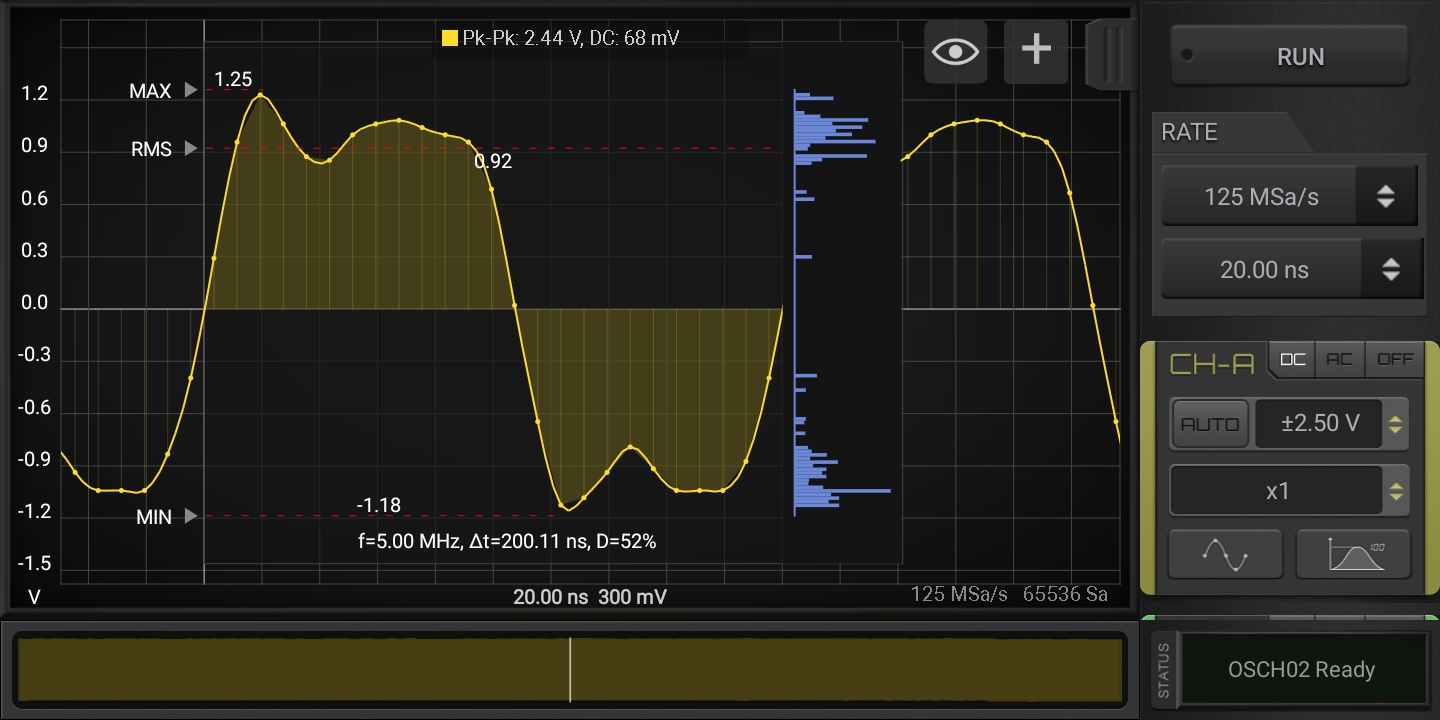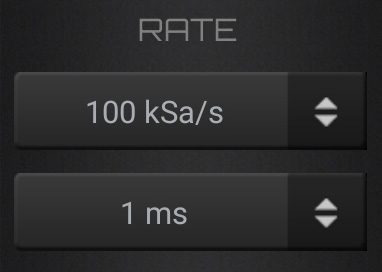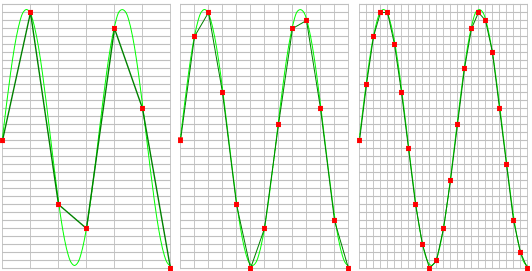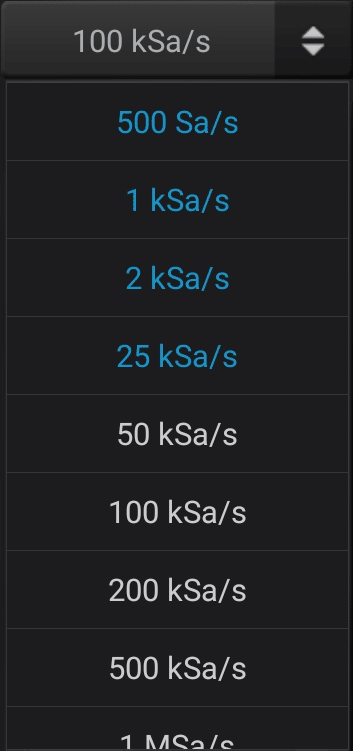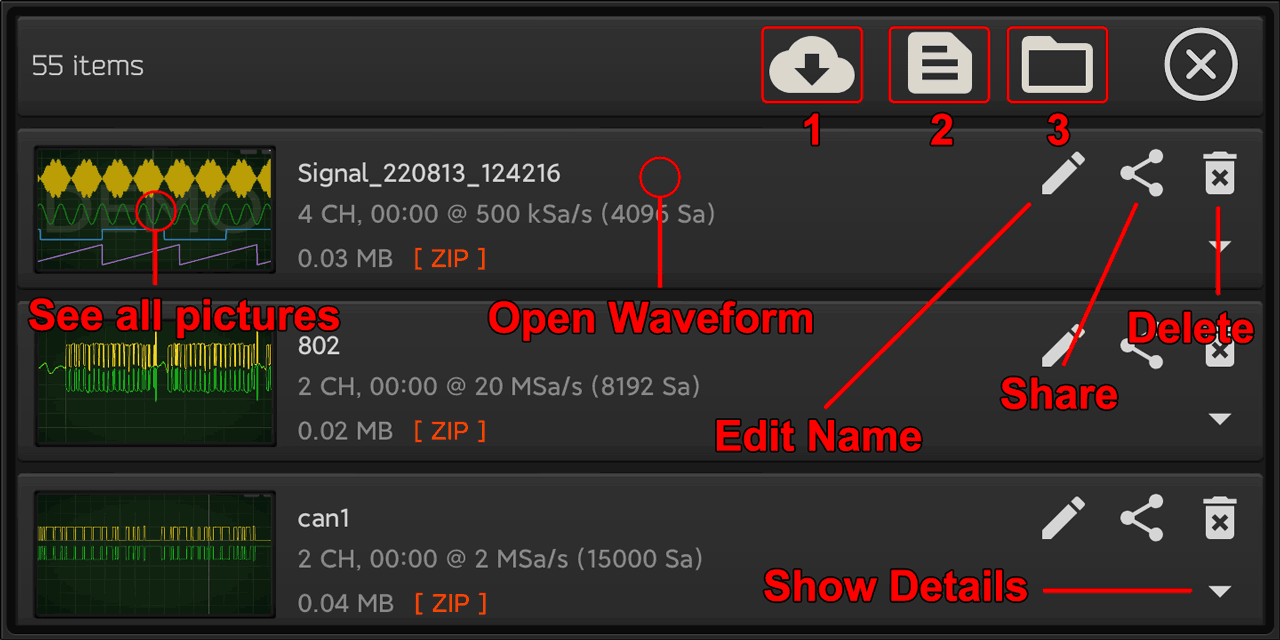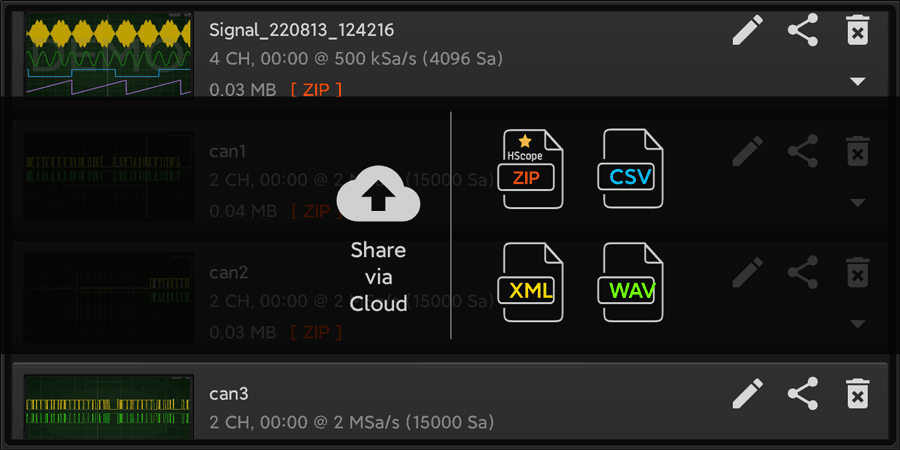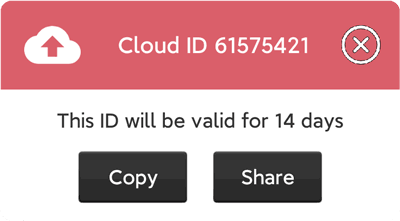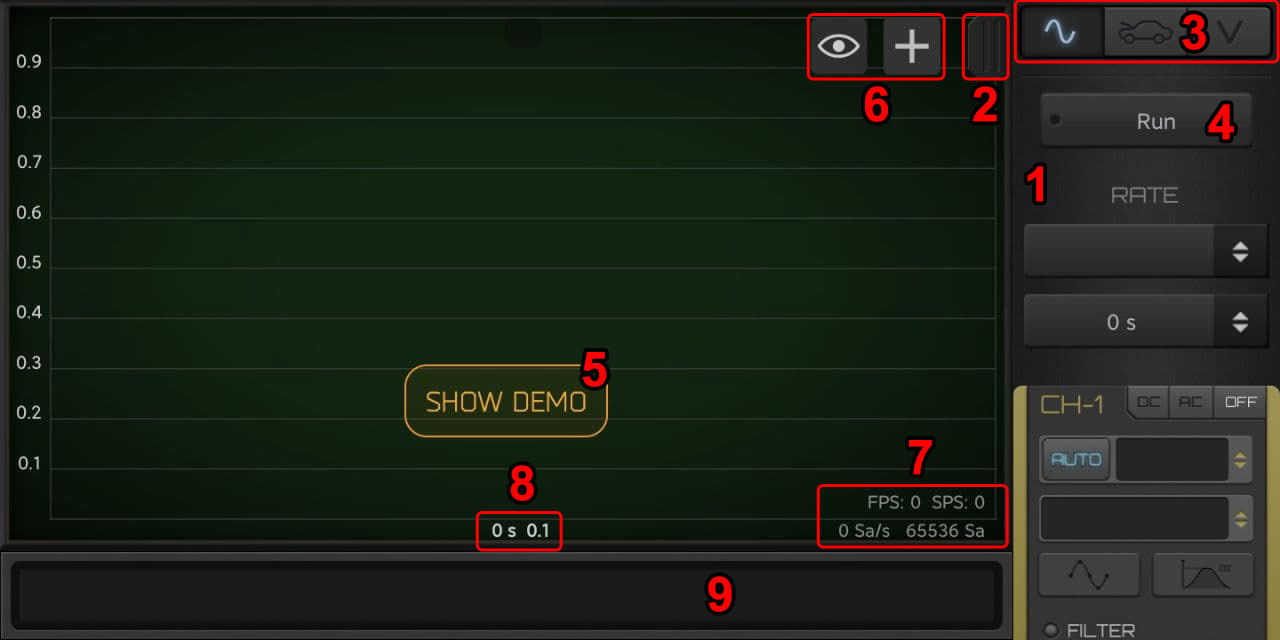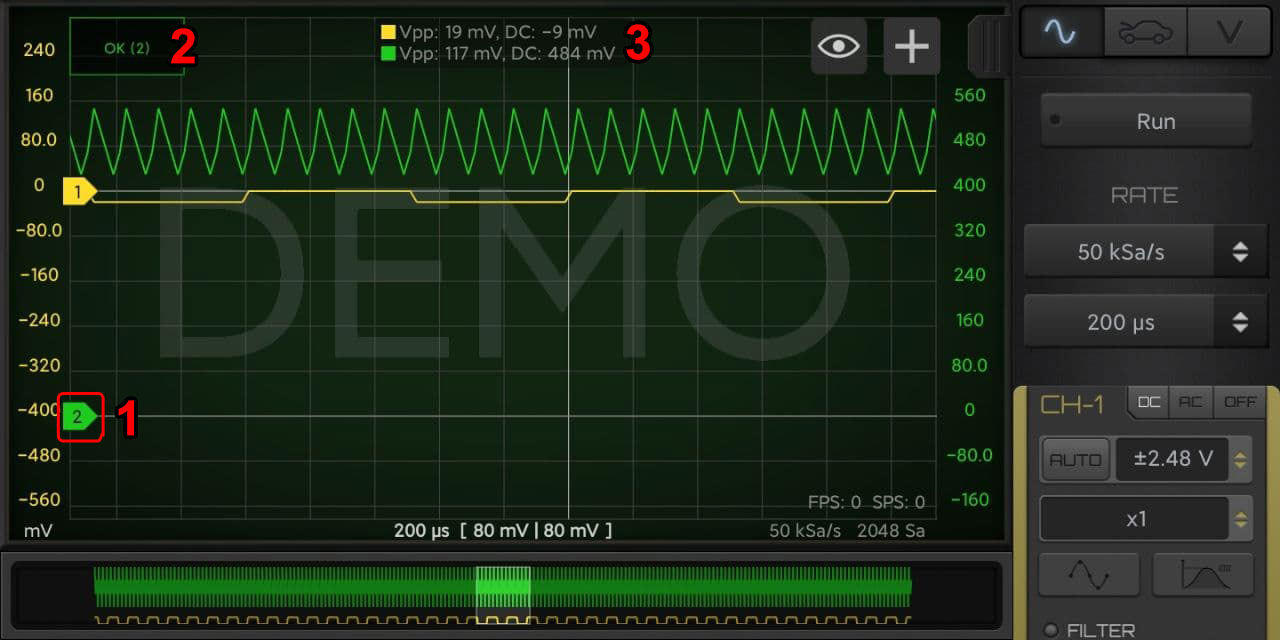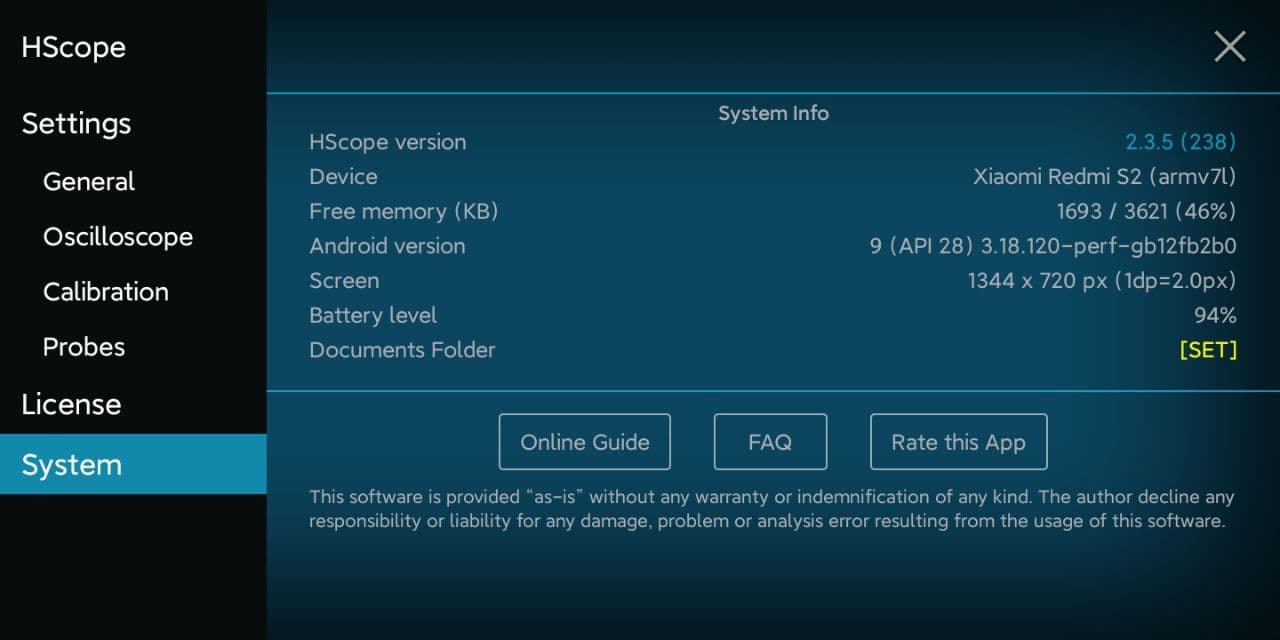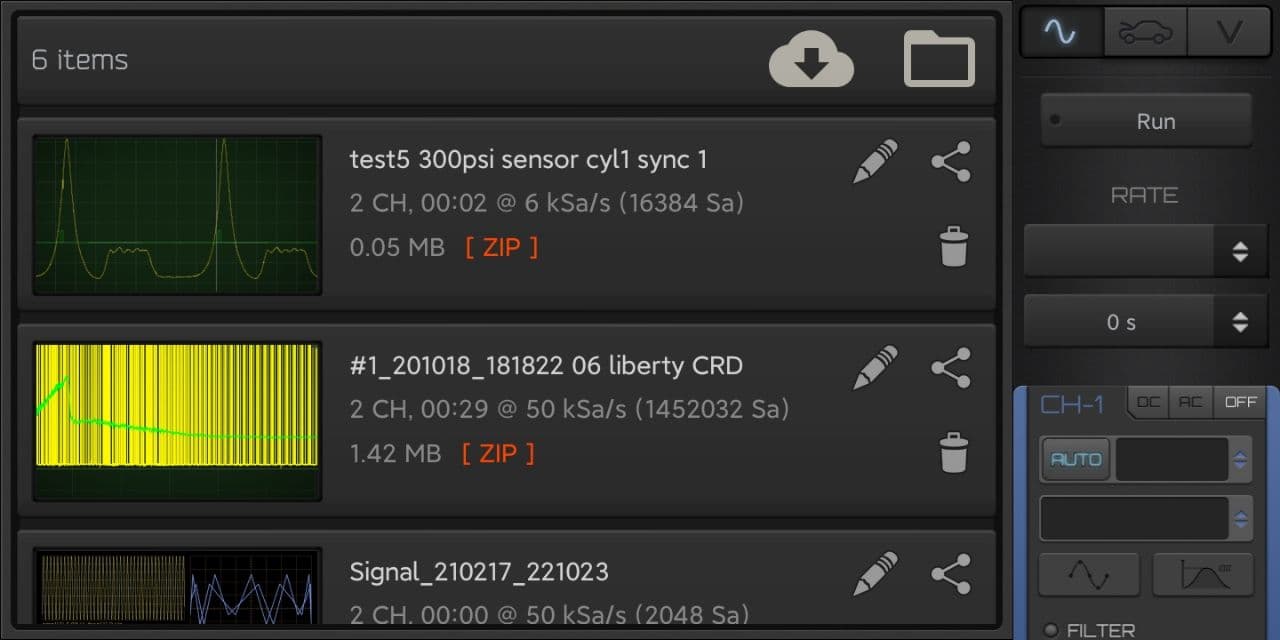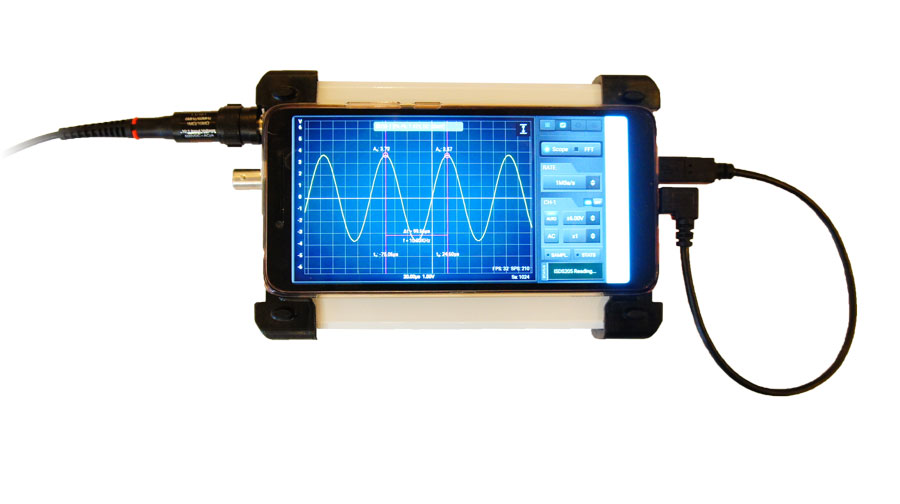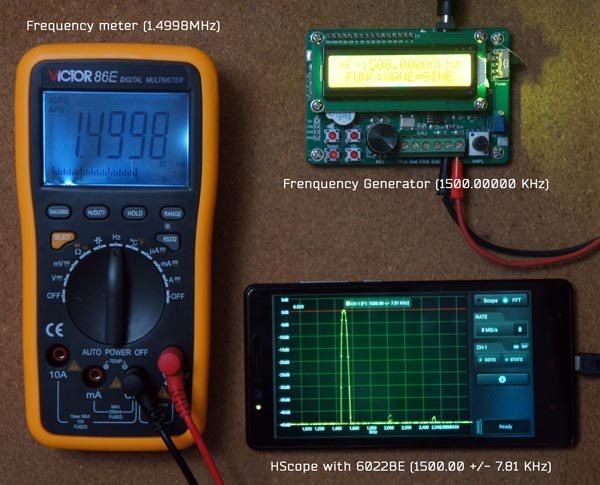
Tools
Click on the “eye” icon to open the View Tools.
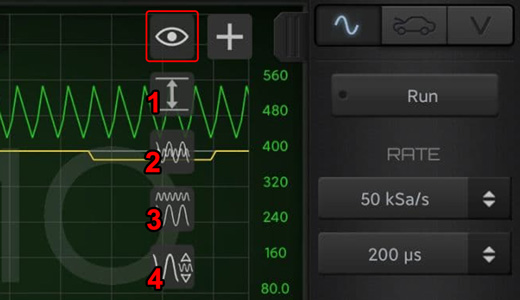
- Zoom the waveforms to fit the screen vertically.
- Align the waveforms on the same Zero Level.
- Align the waveform vertically keeping spacing among them.
- Scale the second channel signal to fit the first channel signal (so to compare the shape).
Press the “+” icon to activate the Supporting Tools.
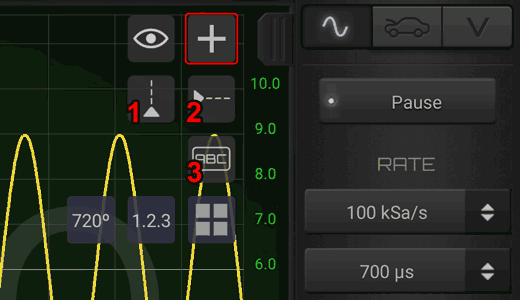
- Vertical Cursors: it show vertical cursor.
- Horizontal Cursors: it create one horizontal cursor.
- Annotation Tool: you can write labels on the graph and position them on the desired location.
Additional tools may be present according the additional modules installed (ie. Automotive Tools in the picture).
1. Vertical Cursors
Activating one vertical cursor allows you to measure amplitude of the signals at a certain point. By pressing 2 fingers on the bottom part of the graph you can enable 2 cursors and have relative measurements. (as time and frequency associated to the selected period).
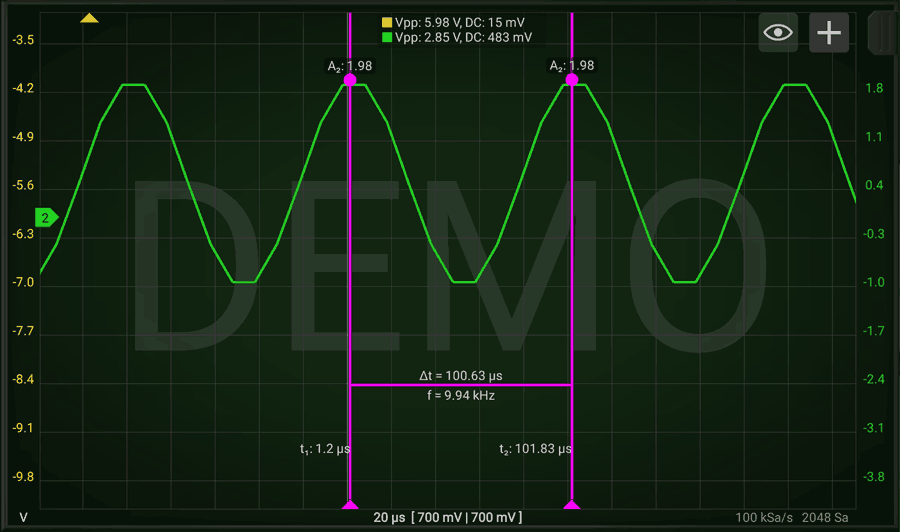
For removing the cursors just push them out of the screen (to the left or to the right), on the red area.
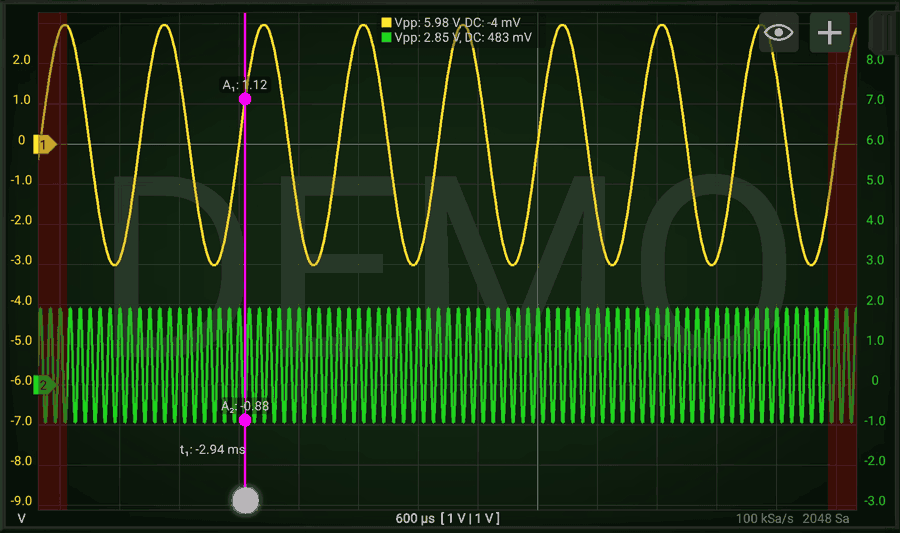
HScope allows a maximum of 2 Vertical Cursors.
2. Horizontal Cursors
You can enable one or more Horizontal cursors. When you have 2 Horizontal cursors on the screen, you can see also the distance between the 2 cursors.
Horizontal cursors works as the Vertical ones.
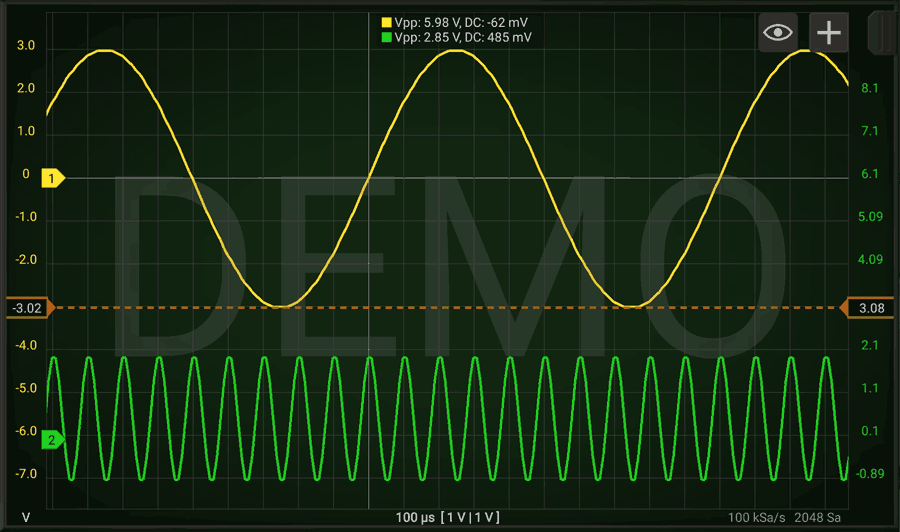
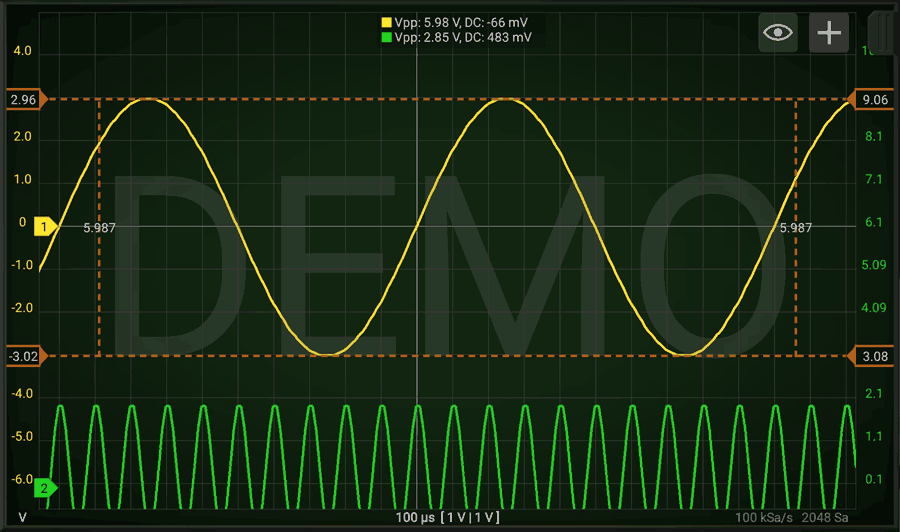
3. Annotation Tool
When you create a new Annotation you can set the text. Later you can change the location of the annotation but not its text. You can select an Annotation by clicking on it.
To delete an Annotation just move it behind the red bar.
